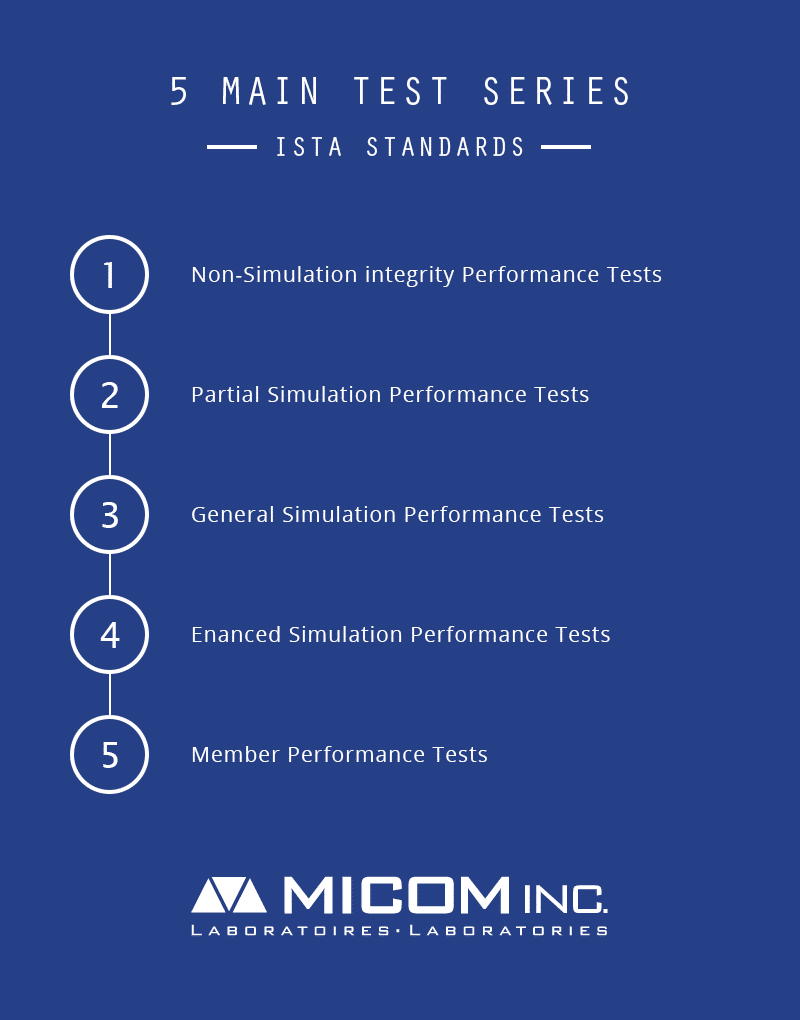The Importance of ISTA Package Testing
Package testing is an often underestimated and overlooked component that should be considered part of a certain product’s manufacturing and shipping process as a whole. It is very important to see and understand how your product will look after it is shipped and once it has reached its point of sale or its final destination.
One may be tempted to think that a box is a box, or that a crate is a crate, or that plastic wrapping is plastic wrapping. It’s easy to think that all packaging may be rather equal, which, in turn, makes it easy to think that the cheapest option is the best option. However, having many years of experience in providing an array of package testing services, including ISTA 2A and ISTA 3A, we at Micom Laboratories Inc. are well aware of the negative impact poor packaging can have on your end result and your cost, and of the significance of making sure that you choose the optimal packaging for your product.
The International Safe Transit Association (ISTA) provides a group of test specifications that simulate different distribution environments and act as industry-specific standards for packaging testing. Micom is an ISTA-accredited test laboratory and, as such, offers a variety of different services using ISTA testing specifications.
In order to help identify which test methods might be most suitable for a certain product and/or situation, ISTA Standards are divided into five main test series. The following infographic showcases what these are:
Some of our most common package tests at Micom include ISTA 3A testing and ISTA 2A testing. ISTA 3A is defined as, “Packaged-Products for Parcel Delivery System Shipment,” and is for products weighing 150 pounds or less. It is used to simulate the environment in which a product being shipped via a courier company would be found and to challenge the capability of the packaging and product to withstand transport hazards. It is often required by .com retailers. ISTA 3A separates packages into four shape categories including standard, small, flat and elongated. Product and packaging are tested together (not individually or separately) and can be tested for atmospheric transit conditions like moisture, low temperature and low pressure (altitude).
ISTA 3A is a general simulation test and part of the ISTA 3-series advanced tests, which means that it utilizes actual transport hazards. This can be contrasted with ISTA 2A, which is a partial simulation test, meaning that it combines elements of non-simulation testing (ISTA 1-series) with some actual transport hazards, but does not necessarily comply with carrier packaging regulations. While it isn’t a fully advanced test, like ISTA 3A, it does offer an evaluation of the performance of a packaged product.
Please visit our package testing and ISTA testing pages for more information about the various test methods Micom offers and to see how we can help you make sure that the packaging you are using fits the bill.
Disclaimer
All of the information and opinions contained in this blog are made with the information, and the understanding that we have reviewed at the time of publishing. However, despite our efforts, we do not offer any guarantee of their accuracy, thoroughness of our investigation or validity. The author of this blog is not liable for any inaccuracies or any losses or damages that may result from the use of the information or data contained herein. This blog has not been reviewed or verified for its accuracy by any peer group associates prior to publication.



